The amazing thing about an automobile is that if we just tilt the front wheels, the whole vehicle will make a turn, this is all done by the steering system of our automobile. The steering system of your car is everything from the steering wheel.
What is a steering system?
A steering system is present in automobiles. It contains components like steering wheels, gears, linkage etc. it is used to control the direction of the vehicle’s motion. A steering system allows the driver to steer the wheel carefully and with safety. It also helps in driving the vehicle easily and with less difficulty.
It is a system of steering and linkage. The steering system allows the automobile to move in the rightful direction. This system helps the driver make a turn of their vehicle by using the front wheels.
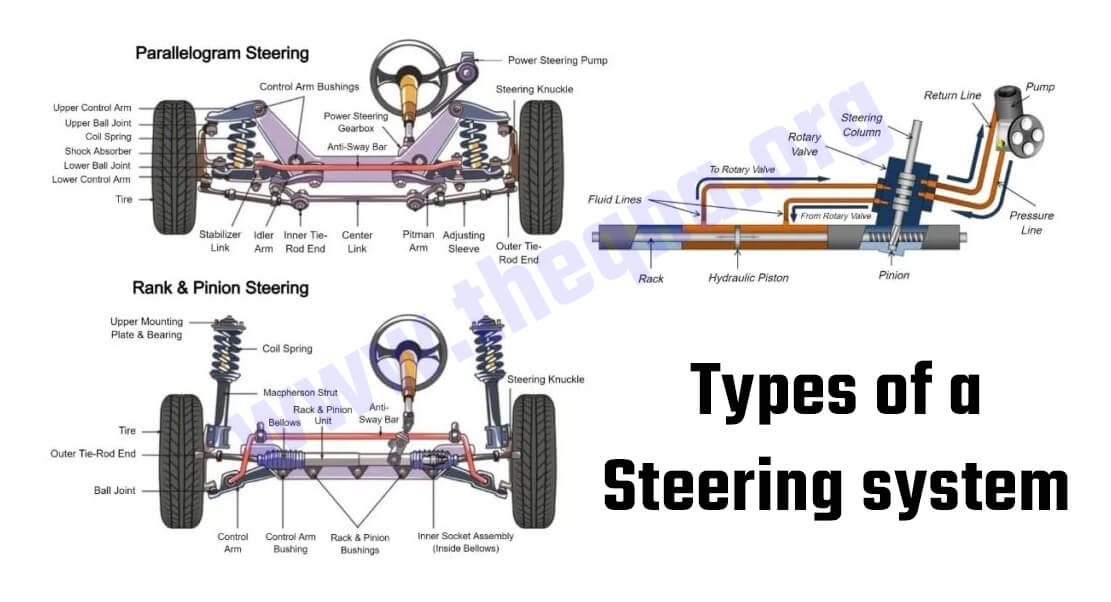
Types of the steering system
Steering systems before used to be just mechanical mechanisms but now they are more innovative and better. For a very long-time hydraulic system was in use. After that hybrid electro-hydraulic system came into use.
The hydraulic system used high-pressure fluid whereas the electric hydraulic system uses electromotor to pressure fluid. Electric steering system uses electric motor and sensor.
Following are the 3 different types of steering systems: –
-
Hydraulic power steering
Hydraulic power steering gives extra power by pressurising hydraulic fluid. It helps us makes steering car easier.
This system assists the valves and helps the driver in turning the wheels. Hydraulic power steering contains a steering gearbox, an oil pump and a valve.
When the pressure on the steering wheel increases, the system becomes active. When we operate the steering wheel, it is further responsible for the operation of the valve. This valve helps the fluid go on either side of the piston so that the wheels can turn in the desired direction. This process decreases the force by the driver and hydraulic force fulfils it. When driving a heavy vehicle, it helps the driver move the steering wheel a bit easier. The hydraulic power steering system has been in use for a very long time.
-
Electro-hydraulic power steering
This system is also the same as the hydraulic power system and works the same also. There are some cars that have a combination of both systems. So providing better results, an electro-hydraulic power system came into view.
The hydraulic power system is the dominant one here. It gives the driver a feel of working with the steering wheel with a little bit of aid. The driver feels more in control with this system. The driver also doesn’t feel disconnected from the road as with the electric power steering system.
-
Electric power system.
This system doesn’t use hydraulics and pressurized fluids. Here, electric power is used to help the driver drive easily. It provides more aid to the driver. The driver wouldn’t have to make a lot of effort.
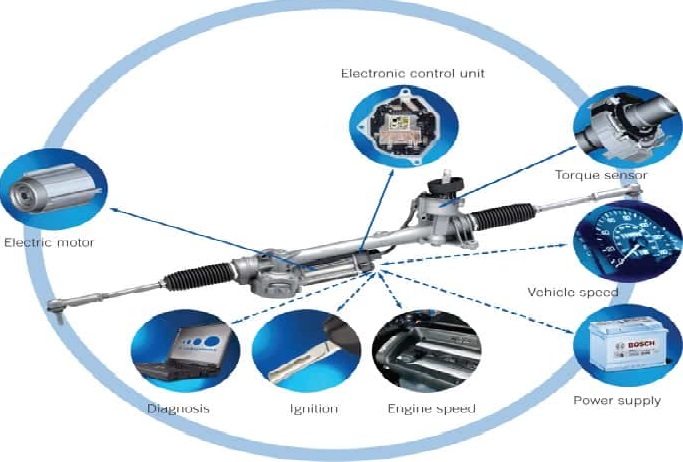
In this system, an electric motor is connected to the steering wheel. The driver’s input is sent to the electric control unit of the automobile. ECU then sends the signal to an electric motor and supplies the torque to the steering assembly.
The driver doesn’t have to put in much effort, everything is at ease.
Rack and pinion steering system.
The rack and pinion system consists of two things namely a circular gear(pinion) and a liner gear (rack). In small cars, SUVs normally use rack and pinion systems. This system generally covert the circular motion to linear motion. Rack and pinion steering system is more cost-effective than recirculating ball steering systems.
There are some advantages of this system like it weighs less and also improve mileage. It provides better brake control. The driver feels safe while driving with this system.
The rack and pinion system was known to be a revolutionary move in the automobile industry. It was cost-effective, also provide better gas mileage and easier vehicle handling.
Also Read:
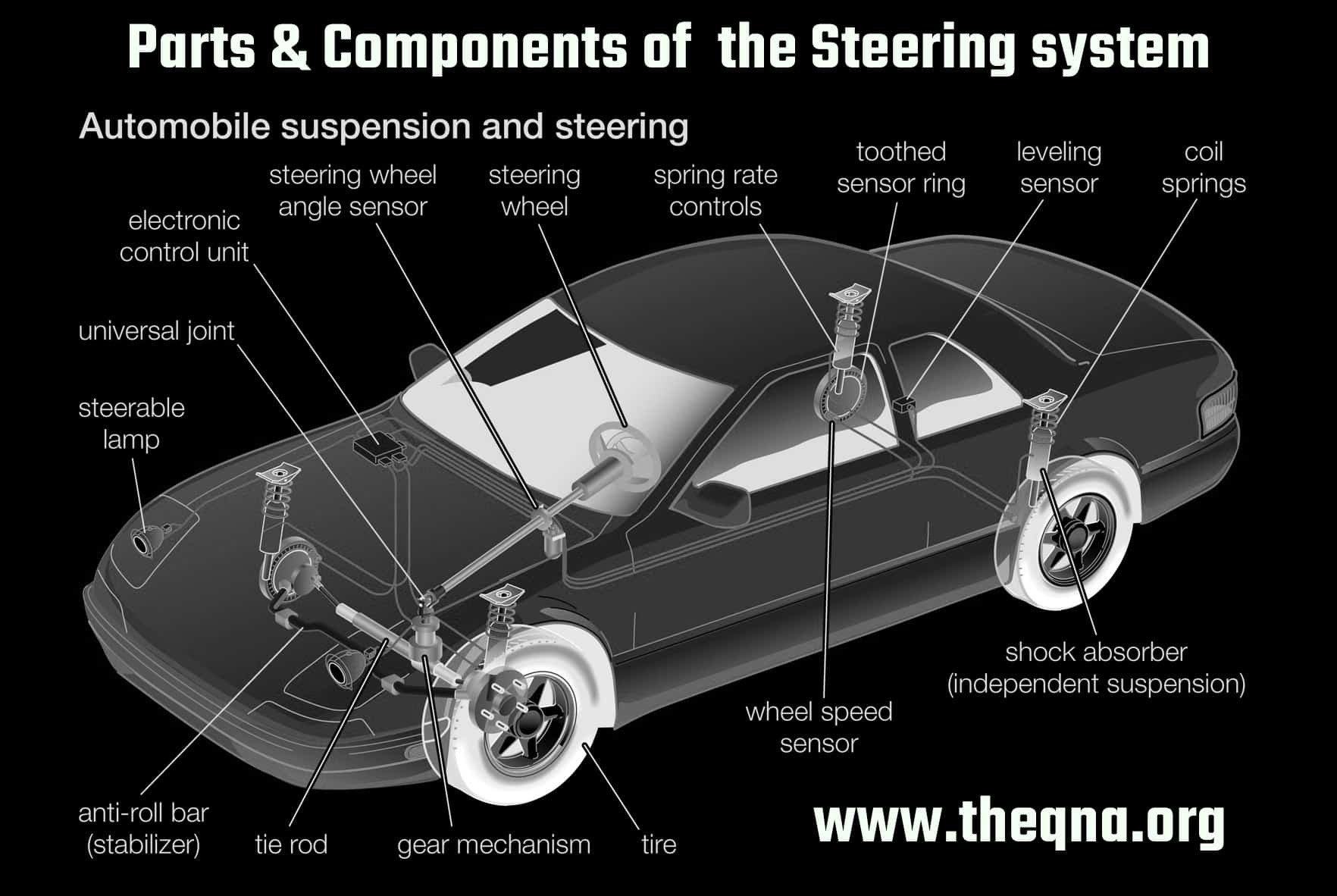
Parts of the Steering system:
The parts of the Steering system that are available are:
- Ball Joints
- Bushings
- Sway Bar Links
- Center Links
- Idler Arms/Pitman Arms
- Rack and Pinion Units
- Tie Rod Ends/Sleeves
- CV Joints/Boots
- CV Axle Half Shafts
- Shock Absorbers
- Struts/Cartridges
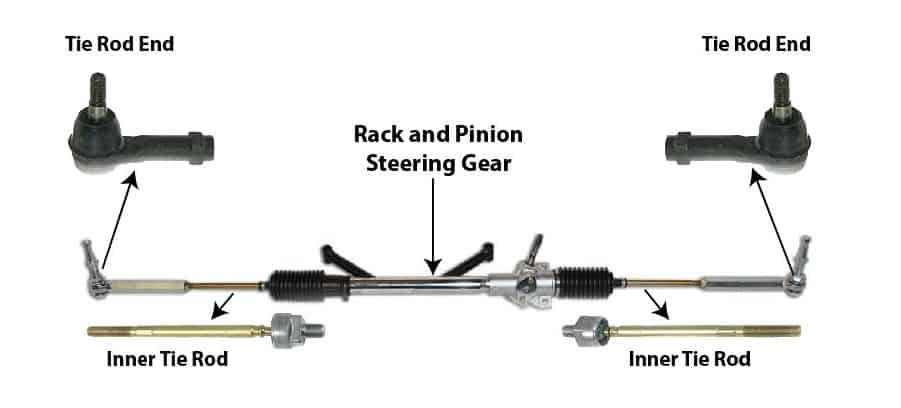
Components of the steering system
There are a lot of components in a steering system. These components help in a stable and safe drive.
Following are its components: –
1. Steering wheel
A steering wheel is present in the car. This wheel is present to control the direction of the car. The driver uses it to steer the automobile. Light switch, wiper switch etc. are a part of the steering wheel.
2. Steering linkage
The steering linkage acts as the link between the steering and the wheels. this component of the steering system helps the steering wheel to turn.
The steering linkage also contains some components. The components of steering linkage are: –
-
Pitman arm
Pitman arm converts the angular motion to linear movement. The sector shaft is connected to it. It acts as a lever. Pitman arm converts the torque of steering gear to mechanical force. It ensures the motion of the steering linkage.
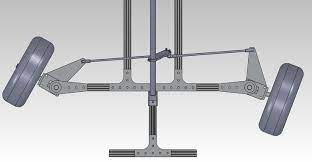
-
Ball joints
Ball joints ensure a safe and smooth ride. It contains a ball and a socket. It provides a pivoting movement in the midst of the steering knuckle and the control arm. The pivot point for each wheel is provided by a ball joint.
-
Drag link
Drag link is the link between the steering gear and pitman arm of a vehicle. When the movements in the vehicle occur the drag link push and pull the steering arm causing the wheel to move.
-
Steering arm
The steering arm is a component that is attached to the steering knuckle. It helps the driver to have a stable and safe steer of the vehicle.
-
Left spindle and kingpin
The steering knuckle contains the wheel hub also known as the spindle. The wheel and tyre attachment like spindle attach to the pivot point of the wheel.
-
Left tie rod arm
The left tie rod arm is attached to the spindle. It covers the torque to turn the right wheel into force.
-
Tie rod
The tie rod is present in rod form. it is connected to both the left tie rod arm and right tie rod arm. The force and pressure are travelled through these components. The length of this component is adjustable.
The pitman arm is connected to either one of the arms and that is connected to another arm. That other arm is connected to the steering arm.
-
Steering stops
These stops are used to give direction to the front wheels. It also manages the wear and tear of the tyre. They have two purposes. First, they are fixed while in motion with the steering arm. After that, they fix the path of movement of the steering knuckle.
-
Steering shaft
A steering shaft is present in the steering column. The shaft is rotated when the steering wheel is in motion. After this process, the motion is shifted to the steering box.
-
Steering gear
The pitman’s arm is splined to the steering gearbox rocker arm at one end and the other end is connected to the drag link by a ball joint.
The steering gearbox contains the gears that transmit the driver’s steering inputs to the steering linkage that turns the wheels, and it multiplies the driver’s steering changes so that the front wheels move more than the steering wheel.
Functions of the steering system
The first and foremost purpose of a steering system is to determine the direction and movement of the car or truck. The movement of the front two wheels is dependent on the whole steering system. Different cars have different steering systems depending on their model.
The steering wheel, steering axle, steering gear mechanism, and steering linkage make up the whole steering system. All of them perform different functions.
The functions of the steering system are as follows: –
-
Determining the car’s direction
The primary task of the steering system is setting up the direction of the automobile. Drivers move the steering wheel so that they can make a turn on the road. If the driver turns the steering wheel to the left, the front wheel also turn left. This makes the car take a turn in the rightful direction.
The steering system is designed in a way that drivers doesn’t feel it difficult to drive their car.
-
Giving stability to the automobile
The steering system provides stability to the automobile. The system is made in such a way that if the driver wants to turn the front wheel and keep it that way they can do so.
the driver feels at ease when the front wheels move the way he wants. It gives him control of the vehicle as well as the road.
The steering system helps the vehicle move in a stable way and at a stable speed.
-
Controls tire’s wear and tear
The steering system also controls the tire’s wear. It tries to minimize the wear of the tire. It also make sure that the move is at a required angle.
The steering system also adjusts the front two tire’s position. It makes sure of the light and better moving of the tires that minimize the wear of the tire.
-
Vibrations to the steering wheel
The steering system is designed in such a way that the driver feels less vibration on the steering wheel that is caused by roads. A steering system can reduce the vibration on the wheels.
Components of the steering system that helps reduce the vibrations on the wheel are:- ball joints, collapsible string joint and brushes and cushions.
Working of the steering system
The working of the steering system determines the movement of the front tyres and that determines the direction of motion of the car.
When we rotate the steering wheel, it makes the shaft turn along with it. After this, the pinion also rotates and then the rack moves in a linear way to the tie rod.
The stability of the movement of the car is dependent on the size of the pinion also. If the size of the pinion is small, then it will be easier to operate it. But if the pinion is bigger in size then it will be a lot harder to handle.
All these functions are done by different components of the steering system. All of them have different job. This all makes driving safe and stable.
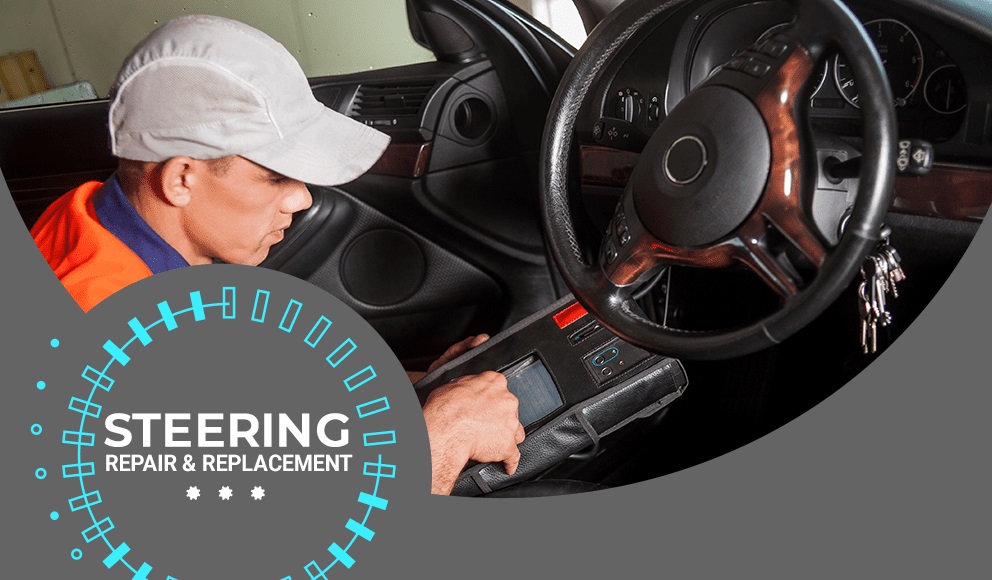
Some frequently asked questions
Q- which steering is the best?
A- All the different types of steering have different advantages and disadvantages. The best out of all is considered to be the electric power steering. It is believed so because it provides better fuel efficiency.
Q- What is a steering system and what are its functions?
A- A steering system is a set of components that provides the stability and safety to the drivers. It also gives the driver a way to have control of their vehicle and the road. The steering system also reduces the efforts done by the driver. It puts the driver at ease.
Q- what are the 3 main parts of the steering system?
A- The 3 main parts of the steering system are: –
- The pump
- The pump pulleys
- The rotary valve
Q- What controls the steering of the car?
A- In most cars, the rack and pinion system controls the car. It is mostly present in small trucks, cars etc. this system is very good and makes the drive safe, without any problem and it also lessens the efforts of the driver.
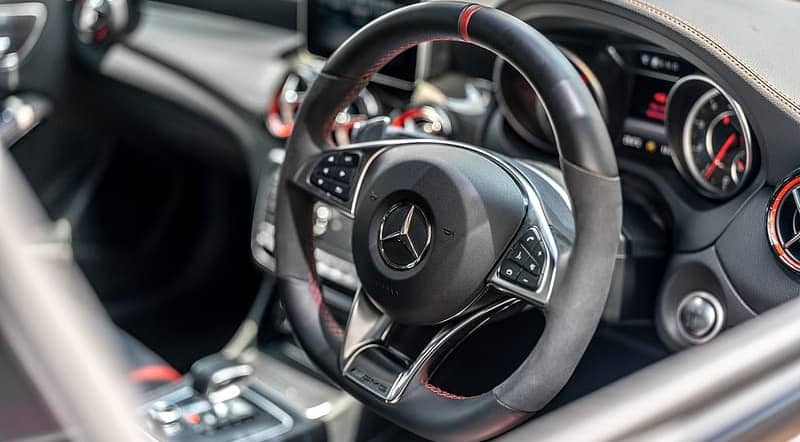
thank you for your anticipation
Really very helpful, Thanks a lot
wow! this article is awesome, i have known everything about Steering today, thanks alots. We expect more from you.
Very interesting
this was very helpful information especial for some one who has little understand with cars
very helpful the idea is so d good
I do appreciate you for the best information